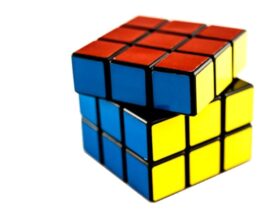From the soft glow of fairy lights strung across a backyard to the vibrant hues of city skylines illuminated at night, colored lights have an undeniable charm. These lights, whether used in festive decorations, urban design, or art installations, have a magnetic quality that draws people in, evoking emotions and creating memorable experiences. But what is it about colored lights that makes them so universally appealing? Let’s explore the psychology, science, and cultural significance behind our fascination with these luminous displays.
The Science of Color and Light
At the heart of our attraction to colored lights lies the interplay between light and color, both of which have profound effects on our brains. Light itself is a powerful sensory stimulus. When light enters our eyes, it triggers photoreceptor cells in the retina, which then send signals to the brain. This process not only allows us to see but also influences our mood, alertness, and even sleep patterns.
When light is combined with color, its impact is amplified. Each color has a specific wavelength, which can evoke different psychological responses. For instance:
- Red light can create feelings of warmth and excitement, as it is often associated with energy and passion.
- Blue light is known for its calming effect, often linked to feelings of tranquility and peace.
- Green light is associated with nature and renewal, promoting relaxation and balance.
- Yellow light is uplifting and energizing, evoking feelings of happiness and optimism.
The way these colors interact with our emotions can explain why we are so drawn to them. Colored lights, by stimulating our visual and emotional centers simultaneously, create a multi-sensory experience that is both captivating and memorable.

The Psychological Impact of Colored Lights
Beyond their aesthetic appeal, colored lights have a psychological impact that can transform spaces and influence behavior. This is why businesses, cities, and artists often use colored lighting strategically.
- In Retail Spaces: Stores often use colored lights to create a certain atmosphere that encourages shopping. Warm, inviting lights can make a space feel more comfortable and cozy, encouraging customers to linger longer and potentially make more purchases.
- In Urban Environments: Cities use colored lights not just to beautify but to create landmarks and focal points. The vibrant hues of Times Square or the glowing skyline of Dubai, for example, are not just visually stunning but also create a sense of identity and pride.
- In Art and Installations: Artists often use colored lights to evoke specific emotions or to convey messages. Light art installations, which have become increasingly popular, use the dynamic interplay of color and light to create immersive experiences that can be both thought-provoking and emotionally moving.
Cultural and Festive Significance
Colored lights also hold deep cultural significance. Across the world, festivals and celebrations are often marked by the use of lights in various colors, each carrying its own meaning. For instance:
- Diwali, the Hindu festival of lights, uses oil lamps and fireworks to signify the victory of light over darkness and good over evil.
- Christmas is often associated with multi-colored string lights, which symbolize joy, warmth, and the spirit of giving.
- Chinese New Year features red lanterns and fireworks, where the color red symbolizes good luck and prosperity.
These traditions demonstrate how colored lights are more than just decorations—they are powerful symbols that carry cultural meanings and evoke collective emotions. The sight of these lights can instantly transport us to a festive state of mind, filling us with nostalgia and joy.
The Role of Technology
In recent years, advances in technology have made colored lights more accessible and versatile than ever before. LED technology, for instance, allows for an almost infinite range of colors and lighting effects, from subtle shifts in hue to dramatic, pulsating displays. This technological evolution has expanded the creative possibilities for using colored lights, making them an integral part of modern design, art, and entertainment.
Smart lighting systems now enable us to control the color and intensity of lights with just a few taps on our smartphones, allowing for personalized lighting experiences tailored to our moods or activities. Whether it’s setting the perfect ambiance for a dinner party or creating a soothing environment for relaxation, colored lights have become a dynamic tool for enhancing our living spaces.

Final Thoughts: The Timeless Appeal of Colored Lights
The allure of colored lights is a blend of science, psychology, culture, and technology. They appeal to us on a fundamental level, stimulating our senses, evoking emotions, and creating connections to shared cultural experiences. As our world becomes increasingly digital and fast-paced, the simple pleasure of being captivated by colored lights—whether during a holiday celebration, a night out in the city, or in the comfort of our own homes—remains a timeless and universal experience.
Whether you are drawn to the soft, warm glow of a candle or the vibrant, shifting colors of an LED display, the magic of colored lights lies in their ability to enchant, inspire, and transform the ordinary into something extraordinary.
Thank you for joining me on this exploration into colored lights. May you find beauty and wonder in every hue, and may your life be illuminated with the vibrant colors of joy and creativity.
Warmest regards,
GertieBlu









